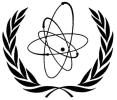To understand why the Germany became the first develop country to take action and start shouting down the nuclear program they have, we have to take a look on the history of nuclear in Germany. We all know until 1989 there was two Germanys the east and the west.
West Germany:
The nuclear program start at 1950s, however the first reactor opened in 1960 in Kohl am Main and it was an experimental nuclear power station. All of the German nuclear power plants that opened between 1960 and 1970 had a power output of less than 1,000 MW and have now all closed down. The first commercial nuclear power plant started operating in 1969. Obrigheim, the first grid station, operated until 2005. (Neckarwestheim). A closed nuclear fuel cycle was planned, starting with mining processes in the Saarland and the Schwarzwald; uranium ore concentration, fuel rod filling production in Hanau; and reprocessing of the spent fuel in the never-built nuclear fuel reprocessing plant at Wackersdorf. The radioactive waste was intended to be stored in a deep geological repository, as part of the Gorleben long-term storage project.
East Germany:
The first nuclear power plant in East Germany was Rheinsberg Nuclear Power Plant and they shutdown in 1990. The second to be commissioned, the Greifswald Nuclear Power Plant, was planned to house eight of the Russian 440 MW VVER-440 reactors. The first four went online between 1973 and 1979. The other four were cancelled during different stages of their build-up. In 1990, during the German reunification, all nuclear power plants were closed due to the differences in safety standards. The Stendal Nuclear Power Plant, which was under construction at the time, was cancelled.
Also Germany had three accidents. The first was in 7/12/1975 the locution was Greifswald, East Germany. Electrical error causes fire in the main trough that destroys control lines and five main coolant pumps, almost inducing meltdown. The second was in 4/5/1986 in Hamm-Uentrop. Operator actions to dislodge damaged fuel rod at Experimental High Temperature Gas Reactor release excessive radiation to 4 km2 (1.5 sq mi) surrounding the facility. The third was in 17/12/1987 in Hesse. Stop valve fails at Biblis Nuclear Power Plant and contaminates local area.
In 8/3/2011 the Germany government shutdown 8 nuclear plant in plan to take the nuclear power aout of the picture completely in 2022.Befor they shut down the plants the nuclear power was accounted for 23% of national electricity consumption. The announcement of the plan was first made by Norbert Röttgen, head of the Federal Ministry for Environment, Nature Conservation and Nuclear Safety, after late-night talks.
Reference:
http://en.wikipedia.org/wiki/Nuclear_power_in_Germany










